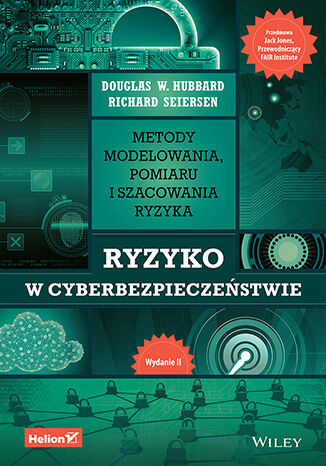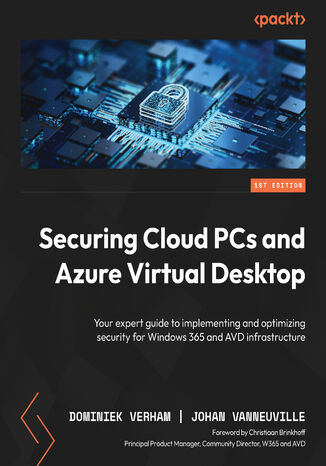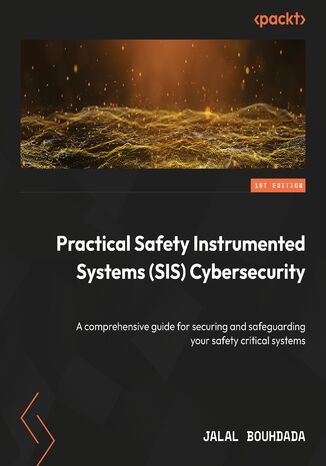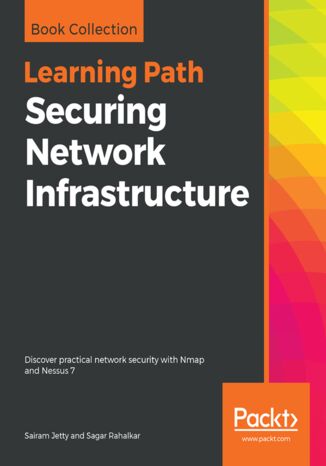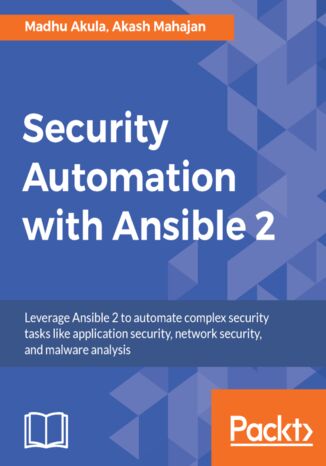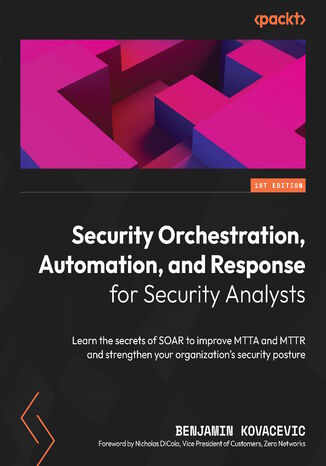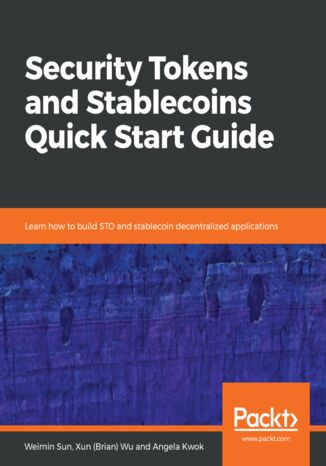Categories
Ebooks
-
Business and economy
- Bitcoin
- Businesswoman
- Coaching
- Controlling
- E-business
- Economy
- Finances
- Stocks and investments
- Personal competence
- Computer in the office
- Communication and negotiation
- Small company
- Marketing
- Motivation
- Multimedia trainings
- Real estate
- Persuasion and NLP
- Taxes
- Social policy
- Guides
- Presentations
- Leadership
- Public Relation
- Reports, analyses
- Secret
- Social Media
- Sales
- Start-up
- Your career
- Management
- Project management
- Human Resources
-
For children
-
For youth
-
Education
-
Encyclopedias, dictionaries
-
E-press
- Architektura i wnętrza
- Health and Safety
- Biznes i Ekonomia
- Home and garden
- E-business
- Ekonomia i finanse
- Esoterecism
- Finances
- Personal finance
- Business
- Photography
- Computer science
- HR & Payroll
- For women
- Computers, Excel
- Accounts
- Culture and literature
- Scientific and academic
- Environmental protection
- Opinion-forming
- Education
- Taxes
- Travelling
- Psychology
- Religion
- Agriculture
- Book and press market
- Transport and Spedition
- Healthand beauty
-
History
-
Computer science
- Office applications
- Data bases
- Bioinformatics
- IT business
- CAD/CAM
- Digital Lifestyle
- DTP
- Electronics
- Digital photography
- Computer graphics
- Games
- Hacking
- Hardware
- IT w ekonomii
- Scientific software package
- School textbooks
- Computer basics
- Programming
- Mobile programming
- Internet servers
- Computer networks
- Start-up
- Operational systems
- Artificial intelligence
- Technology for children
- Webmastering
-
Other
-
Foreign languages
-
Culture and art
-
School reading books
-
Literature
- Antology
- Ballade
- Biographies and autobiographies
- For adults
- Dramas
- Diaries, memoirs, letters
- Epic, epopee
- Essay
- Fantasy and science fiction
- Feuilletons
- Work of fiction
- Humour and satire
- Other
- Classical
- Crime fiction
- Non-fiction
- Fiction
- Mity i legendy
- Nobelists
- Novellas
- Moral
- Okultyzm i magia
- Short stories
- Memoirs
- Travelling
- Narrative poetry
- Poetry
- Politics
- Popular science
- Novel
- Historical novel
- Prose
- Adventure
- Journalism, publicism
- Reportage novels
- Romans i literatura obyczajowa
- Sensational
- Thriller, Horror
- Interviews and memoirs
-
Natural sciences
-
Social sciences
-
School textbooks
-
Popular science and academic
- Archeology
- Bibliotekoznawstwo
- Cinema studies
- Philology
- Polish philology
- Philosophy
- Finanse i bankowość
- Geography
- Economy
- Trade. World economy
- History and archeology
- History of art and architecture
- Cultural studies
- Linguistics
- Literary studies
- Logistics
- Maths
- Medicine
- Humanities
- Pedagogy
- Educational aids
- Popular science
- Other
- Psychology
- Sociology
- Theatre studies
- Theology
- Economic theories and teachings
- Transport i spedycja
- Physical education
- Zarządzanie i marketing
-
Guides
-
Game guides
-
Professional and specialist guides
-
Law
- Health and Safety
- History
- Road Code. Driving license
- Law studies
- Healthcare
- General. Compendium of knowledge
- Academic textbooks
- Other
- Construction and local law
- Civil law
- Financial law
- Economic law
- Economic and trade law
- Criminal law
- Criminal law. Criminal offenses. Criminology
- International law
- International law
- Health care law
- Educational law
- Tax law
- Labor and social security law
- Public, constitutional and administrative law
- Family and Guardianship Code
- agricultural law
- Social law, labour law
- European Union law
- Industry
- Agricultural and environmental
- Dictionaries and encyclopedia
- Public procurement
- Management
-
Tourist guides and travel
- Africa
- Albums
- Southern America
- North and Central America
- Australia, New Zealand, Oceania
- Austria
- Asia
- Balkans
- Middle East
- Bulgary
- China
- Croatia
- The Czech Republic
- Denmark
- Egipt
- Estonia
- Europe
- France
- Mountains
- Greece
- Spain
- Holand
- Iceland
- Lithuania
- Latvia
- Mapy, Plany miast, Atlasy
- Mini travel guides
- Germany
- Norway
- Active travelling
- Poland
- Portugal
- Other
- Przewodniki po hotelach i restauracjach
- Russia
- Romania
- Slovakia
- Slovenia
- Switzerland
- Sweden
- World
- Turkey
- Ukraine
- Hungary
- Great Britain
- Italy
-
Psychology
- Philosophy of life
- Kompetencje psychospołeczne
- Interpersonal communication
- Mindfulness
- General
- Persuasion and NLP
- Academic psychology
- Psychology of soul and mind
- Work psychology
- Relacje i związki
- Parenting and children psychology
- Problem solving
- Intellectual growth
- Secret
- Sexapeal
- Seduction
- Appearance and image
- Philosophy of life
-
Religion
-
Sport, fitness, diets
-
Technology and mechanics
Audiobooks
-
Business and economy
- Bitcoin
- Businesswoman
- Coaching
- Controlling
- E-business
- Economy
- Finances
- Stocks and investments
- Personal competence
- Communication and negotiation
- Small company
- Marketing
- Motivation
- Real estate
- Persuasion and NLP
- Taxes
- Social policy
- Guides
- Presentations
- Leadership
- Public Relation
- Secret
- Social Media
- Sales
- Start-up
- Your career
- Management
- Project management
- Human Resources
-
For children
-
For youth
-
Education
-
Encyclopedias, dictionaries
-
E-press
-
History
-
Computer science
-
Other
-
Foreign languages
-
Culture and art
-
School reading books
-
Literature
- Antology
- Ballade
- Biographies and autobiographies
- For adults
- Dramas
- Diaries, memoirs, letters
- Epic, epopee
- Essay
- Fantasy and science fiction
- Feuilletons
- Work of fiction
- Humour and satire
- Other
- Classical
- Crime fiction
- Non-fiction
- Fiction
- Mity i legendy
- Nobelists
- Novellas
- Moral
- Okultyzm i magia
- Short stories
- Memoirs
- Travelling
- Poetry
- Politics
- Popular science
- Novel
- Historical novel
- Prose
- Adventure
- Journalism, publicism
- Reportage novels
- Romans i literatura obyczajowa
- Sensational
- Thriller, Horror
- Interviews and memoirs
-
Natural sciences
-
Social sciences
-
Popular science and academic
-
Guides
-
Professional and specialist guides
-
Law
-
Tourist guides and travel
-
Psychology
- Philosophy of life
- Interpersonal communication
- Mindfulness
- General
- Persuasion and NLP
- Academic psychology
- Psychology of soul and mind
- Work psychology
- Relacje i związki
- Parenting and children psychology
- Problem solving
- Intellectual growth
- Secret
- Sexapeal
- Seduction
- Appearance and image
- Philosophy of life
-
Religion
-
Sport, fitness, diets
-
Technology and mechanics
Videocourses
-
Data bases
-
Big Data
-
Biznes, ekonomia i marketing
-
Cybersecurity
-
Data Science
-
DevOps
-
For children
-
Electronics
-
Graphics/Video/CAX
-
Games
-
Microsoft Office
-
Development tools
-
Programming
-
Personal growth
-
Computer networks
-
Operational systems
-
Software testing
-
Mobile devices
-
UX/UI
-
Web development
-
Management
Podcasts
System security
Ryzyko w cyberbezpieczeństwie. Metody modelowania, pomiaru i szacowania ryzyka. Wydanie II
Douglas W. Hubbard, Richard Seiersen
Lord Kelvin powtarzał, że jeśli nie potrafisz czegoś zmierzyć, to nie znasz tego wystarczająco dobrze. Ta zasada w pełni odnosi się do analizy ryzyka w cyberbezpieczeństwie, a słabość pomiarów prowadzi do podejmowania błędnych decyzji. Ta książka nauczy Cię nowych sposobów myślenia o problemie. Uważam, że jest lekturą obowiązkową dla naszej dziedziny! John "Four" Flynn, CISO Amazon Stores Oto drugie wydanie książki, którą specjaliści CISO uznali za przełomową. Dowiesz się z niej, jak kwantyfikować niepewność i jak za pomocą prostych metod i narzędzi poprawić ocenę ryzyka w nowoczesnych organizacjach. Znalazły się tu nowe techniki modelowania, pomiaru i szacowania, a także mnóstwo praktycznych wskazówek dotyczących wdrażania tych rozwiązań w formie spójnego programu. Nauczysz się też oceniać ryzyko, gdy masz dostęp do niewielu danych. Przekonasz się, że zamiast metod jakościowych dużo lepsze efekty w zarządzaniu ryzykiem cyberbezpieczeństwa osiąga się dzięki kwantyfikacji i zaplanowanym pomiarom. Ta książka umożliwia pewne poruszanie się w złożonym krajobrazie cyberbezpieczeństwa. Jason Chan, były wiceprezes do spraw bezpieczeństwa informacji, Netflix Opisane przez Hubbarda i Seiersena metody są praktyczne. Każdy, kto zajmuje się cyberbezpieczeństwem, powinien je stosować. Nick Shevelyov, były CISO banku Silicon Valley
Dominiek Verham, Johan Vanneuville, Christiaan Brinkhoff, Scott Manchester
Do you want to effectively implement and maintain secure virtualized systems? This book will give you a comprehensive understanding of Microsoft virtual endpoints, from the fundamentals of Windows 365 and Azure Virtual Desktop to advanced security measures, enabling you to secure, manage, and optimize virtualized environments in line with contemporary cybersecurity challenges.You’ll start with an introduction to Microsoft technologies, gaining a foundational understanding of their capabilities. Next, you’ll delve into the importance of endpoint security, addressing the challenges faced by companies in safeguarding their digital perimeters. This book serves as a practical guide to securing virtual endpoints, covering topics such as network access, data leakage prevention, update management, threat detection, and access control configuration. As you progress, the book offers insights into the nuanced security measures required for Windows 365, Azure Virtual Desktop, and the broader Microsoft Azure infrastructure. The book concludes with real-world use cases, providing practical scenarios for deploying Windows 365 and Azure Virtual Desktop.By the end of this book, you’ll be equipped with practical skills for implementing and evaluating robust endpoint security strategies.
As modern process facilities become increasingly sophisticated and vulnerable to cyber threats, securing critical infrastructure is more crucial than ever. This book offers an indispensable guide to industrial cybersecurity and Safety Instrumented Systems (SIS), vital for maintaining the safety and reliability of critical systems and protecting your operations, personnel, and assets.Starting with SIS design principles, the book delves into the architecture and protocols of safety networks. It provides hands-on experience identifying vulnerabilities and potential attack vectors, exploring how attackers might target SIS components. You’ll thoroughly analyze Key SIS technologies, threat modeling, and attack techniques targeting SIS controllers and engineer workstations. The book shows you how to secure Instrument Asset Management Systems (IAMS), implement physical security measures, and apply integrated risk management methodologies. It also covers compliance with emerging cybersecurity regulations and industry standards worldwide.By the end of the book, you’ll have gained practical insights into various risk assessment methodologies and a comprehensive understanding of how to effectively protect critical infrastructure.
Securing Network Infrastructure. Discover practical network security with Nmap and Nessus 7
Digitization drives technology today, which is why it’s so important for organizations to design security mechanisms for their network infrastructures. Analyzing vulnerabilities is one of the best ways to secure your network infrastructure.This Learning Path begins by introducing you to the various concepts of network security assessment, workflows, and architectures. You will learn to employ open source tools to perform both active and passive network scanning and use these results to analyze and design a threat model for network security. With a firm understanding of the basics, you will then explore how to use Nessus and Nmap to scan your network for vulnerabilities and open ports and gain back door entry into a network. As you progress through the chapters, you will gain insights into how to carry out various key scanning tasks, including firewall detection, OS detection, and access management to detect vulnerabilities in your network.By the end of this Learning Path, you will be familiar with the tools you need for network scanning and techniques for vulnerability scanning and network protection.This Learning Path includes content from the following Packt books:•Network Scanning Cookbook by Sairam Jetty•Network Vulnerability Assessment by Sagar Rahalkar
Security automation is one of the most interesting skills to have nowadays. Ansible allows you to write automation procedures once and use them across your entire infrastructure. This book will teach you the best way to use Ansible for seemingly complex tasks by using the various building blocks available and creating solutions that are easy to teach others, store for later, perform version control on, and repeat.We’ll start by covering various popular modules and writing simple playbooks to showcase those modules. You’ll see how this can be applied over a variety of platforms and operating systems, whether they are Windows/Linux bare metal servers or containers on a cloud platform. Once the bare bones automation is in place, you’ll learn how to leverage tools such as Ansible Tower or even Jenkins to create scheduled repeatable processes around security patching, security hardening, compliance reports, monitoring of systems, and so on. Moving on, you’ll delve into useful security automation techniques and approaches, and learn how to extend Ansible for enhanced security. While on the way, we will tackle topics like how to manage secrets, how to manage all the playbooks that we will create and how to enable collaboration using Ansible Galaxy. In the final stretch, we’ll tackle how to extend the modules of Ansible for our use, and do all the previous tasks in a programmatic manner to get even more powerful automation frameworks and rigs.
Benjamin Kovacevic, Nicholas Dicola
What your journey will look likeWith the help of this expert-led book, you’ll become well versed with SOAR, acquire new skills, and make your organization's security posture more robust.You’ll start with a refresher on the importance of understanding cyber security, diving into why traditional tools are no longer helpful and how SOAR can help.Next, you’ll learn how SOAR works and what its benefits are, including optimized threat intelligence, incident response, and utilizing threat hunting in investigations.You’ll also get to grips with advanced automated scenarios and explore useful tools such as Microsoft Sentinel, Splunk SOAR, and Google Chronicle SOAR.The final portion of this book will guide you through best practices and case studies that you can implement in real-world scenarios.By the end of this book, you will be able to successfully automate security tasks, overcome challenges, and stay ahead of threats.
Weimin Sun, Xun (Brian) Wu, Angela Kwok
The failure of initial coin offerings (ICOs) is no accident, as most ICOs do not link to a real asset and are not regulated. Realizing the shortcomings of ICOs, the blockchain community and potential investors embraced security token offerings (STOs) and stablecoins enthusiastically.In this book, we start with an overview of the blockchain technology along with its basic concepts. We introduce the concept behind STO, and cover the basic requirements for launching a STO and the relevant regulations governing its issuance. We discuss U.S. securities laws development in launching security digital tokens using blockchain technology and show some real use cases. We also explore the process of STO launches and legal considerations. We introduce popular security tokens in the current blockchain space and talk about how to develop a security token DApp, including smart contract development for ERC1404 tokens. Later, you'll learn to build frontend side functionalities to interact with smart contracts. Finally, we discuss stablecoin technical design functionalities for issuing and operating STO tokens by interacting with Ethereum smart contracts.By the end of this book, you will have learned more about STOs and gained a detailed knowledge of building relevant applications—all with the help of practical examples.
Security with Go. Explore the power of Golang to secure host, web, and cloud services
Go is becoming more and more popular as a language for security experts. Its wide use in server and cloud environments, its speed and ease of use, and its evident capabilities for data analysis, have made it a prime choice for developers who need to think about security.Security with Go is the first Golang security book, and it is useful for both blue team and red team applications. With this book, you will learn how to write secure software, monitor your systems, secure your data, attack systems, and extract information.Defensive topics include cryptography, forensics, packet capturing, and building secure web applications.Offensive topics include brute force, port scanning, packet injection, web scraping, social engineering, and post exploitation techniques.

